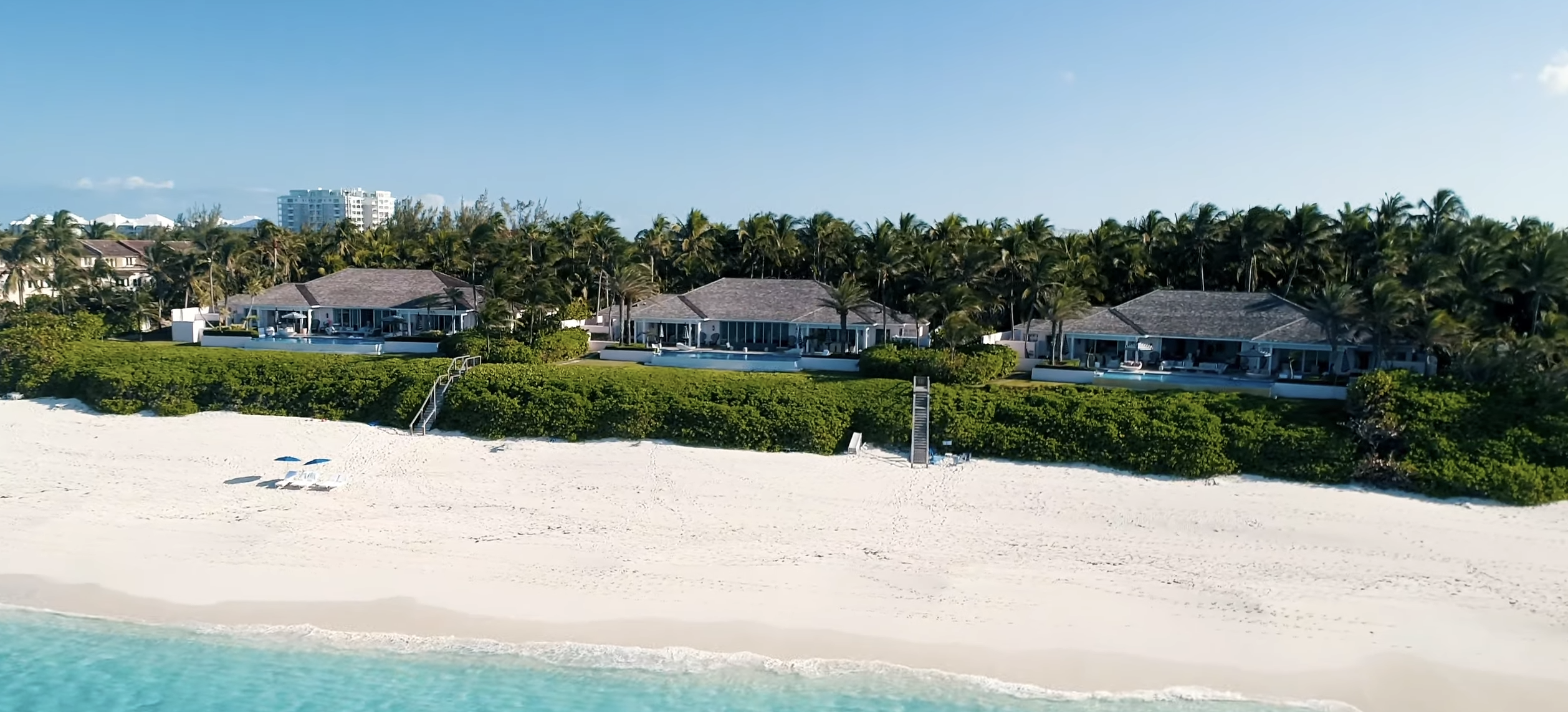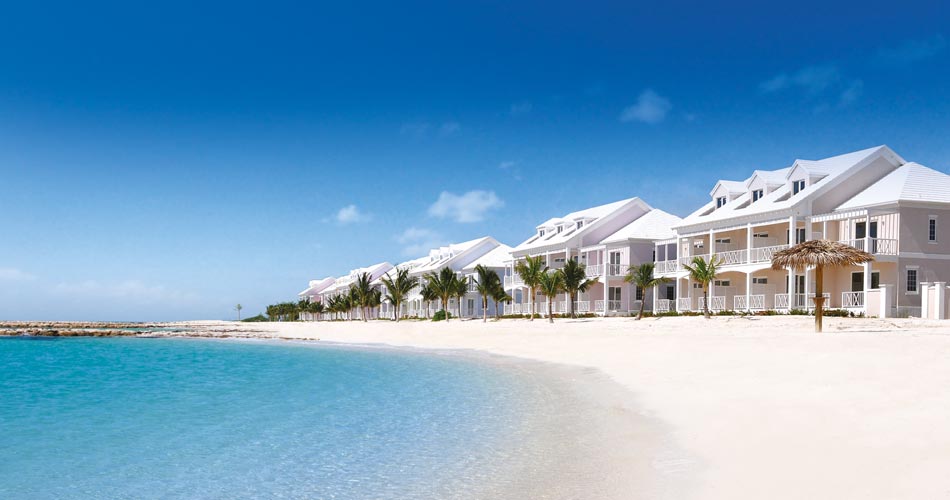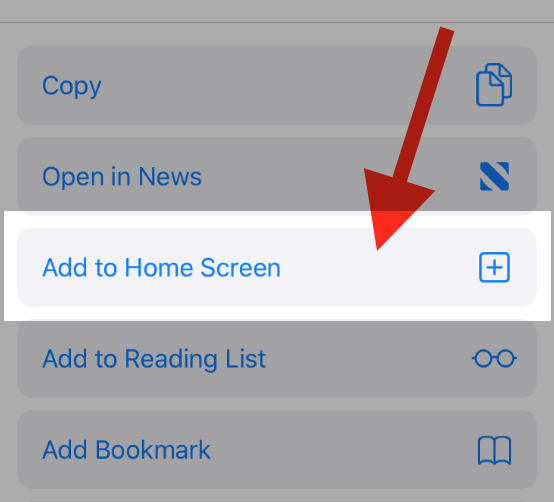Why Bahamas Residency by Investment Still Makes Sense in 2026
In 2025, the Bahamas government increased the investment level required for Economic Permanent Residency (EPR). That adjustment carried forward into 2026, and it changed one important thing for serious investors: you now need to be more intentional about the property you buy.
If you’re investing at the $1,000,000+ level, the right choice of property can deliver three things at once:
- A lifestyle upgrade for your family in Nassau or on one of the Family Islands.
- A credible path to Economic Permanent Residency in The Bahamas.
- Real asset value in a hard-to-replicate prime waterfront or gated community location.
On this page, I’ll walk you through the 2026 rules, the most popular luxury communities, the residency timeline, and how I help you go from “considering The Bahamas” to owning a qualifying property with your residency strategy mapped out.
2026 Investment Threshold & Key Requirements
As of 2026, the typical route for high-net-worth individuals is the Economic Permanent Residency (EPR) category. While every application is ultimately subject to government policy and discretion, here is the current practical landscape that most investors are working with:
Minimum Real Estate Investment (2026)
- Minimum qualifying investment: usually USD $1,000,000 in Bahamian real estate.
- Fast-track consideration: investments from about $1.5M+ may be considered for expedited review when available under current policy.
- Holding period: plan on a minimum 10-year holding period for your qualifying asset (property or approved bonds).
- Presence requirement: expect to spend roughly 90 days per year in The Bahamas to maintain your residency status.
In addition to real estate, some investors explore qualifying zero-coupon government bonds. But for most of my clients, a residency-eligible luxury property is the preferred route because it gives you both a home base and a tangible asset.
Typical Supporting Requirements
- Clean police record and background checks.
- Proof of independent means (you’re not seeking local employment).
- Source-of-funds documentation for your real estate purchase.
- Completed purchase of the qualifying property and proof of ownership before final residency approval.
If you’d like me to review properties you’re already considering — whether in Ocean Club Estates, Albany, Lyford Cay, Old Fort Bay or Palm Cay — I can quickly tell you which are best aligned with the current residency framework.
You can also explore more detailed guidance on buying property as a foreigner here:
How the Residency by Investment Process Works (Step-by-Step)
Here’s how I walk you through the process if you were sitting in my office in Nassau today:
Step 1 – Strategy Call & Residency Fit
We start with a consultation call where I get clear on your goals: Are you prioritising tax planning, lifestyle, a second home base, or a long-term Plan B? We also discuss timelines, family members to include, and your target budget.
At this stage, we’ll also review:
- Whether Economic Permanent Residency is the right category for you.
- Which islands and communities fit your lifestyle (Nassau vs. Family Islands).
- Whether you’ll be using the property primarily as a residence, part-time rental, or mixed-use asset.
Step 2 – Shortlist of Residency-Eligible Properties
Next, we build a targeted shortlist of properties that:
- Sit comfortably at or above the $1M threshold.
- Offer strong fundamentals — location, view, build quality, amenities and future liquidity.
- Align with your family’s lifestyle (golf, marina, privacy, school access, resort-style living, etc.).
This is where my access to the Bahamas MLS and on-the-ground relationships becomes very important. You’re not guessing — you’re choosing from handpicked, vetted, expert-selected options.
If you want to see what’s currently available, you can also:
Step 3 – Offer, Due Diligence & Closing
Once you’ve chosen a property, we structure a competitive offer and engage a local attorney to handle the legal work, including:
- Title search and due diligence on the property.
- Review of all contracts and strata documents (for condos).
- Structuring the purchase (personal, company, or trust, in coordination with your tax advisors).
When you close, you’ll pay associated transaction costs such as VAT on the property transfer, legal fees and government stamp duties, which we’ll estimate up-front for you.
Step 4 – Residency Application Preparation
After closing, the legal team assembles your Economic Permanent Residency application, including property documentation, proof of funds, police clearances and all supporting forms.
My role is to coordinate between you, your attorney and any other advisors so that your file is complete and aligned with current expectations before it is submitted.
Step 5 – Submission, Interview & Approval
Once your application is lodged with the Department of Immigration, you can expect:
- Processing in the 6–18 month range for most complete applications.
- A scheduled interview in The Bahamas.
- Issuance of your Economic Permanent Residency certificate once approved.
From there, your focus shifts to enjoying your property, spending sufficient time in The Bahamas each year, and making the most of what a residency-supported lifestyle here can offer your family.
Best Luxury Communities for Residency-Eligible Investments
The right community matters as much as the apartment or villa itself. Here are some of the most sought-after locations my EPR clients focus on:

1. Ocean Club Estates & Four Seasons Ocean Club Residences (Paradise Island)
This is where ultra-prime Bahamas living meets full-service resort luxury. Golf, marina access, beach clubs and white-glove services are all at your doorstep.
2. Albany
A private, master-planned community favoured by professional athletes, entrepreneurs and global families who want security, a deep-water marina and a modern aesthetic.
3. Lyford Cay & Old Fort Bay
Classic, established gated communities with a strong reputation among multigenerational families who want privacy, club amenities and access to Nassau’s services.
4. Palm Cay & Marina Communities
For investors who want boat-first living, Palm Cay and other marina-oriented communities offer a great balance of residence, rental potential and lifestyle.
5. Prime Island Waterfront in Eleuthera, Exuma & Harbour Island
If your vision of residency involves more seclusion, we can look at Eleuthera beachfront property, Exuma villas or Harbour Island beachfront homes that meet the investment threshold while giving you a slower, more private island experience.
For deeper reading on specific islands and micro-markets, you can explore:
Tax, Asset Protection & Lifestyle Benefits You Shouldn’t Ignore
When you’re investing at the seven-figure level, the value of Bahamas residency isn’t just the ocean view — it’s the ability to pair a blue-water lifestyle with a tax-neutral, stable jurisdiction.
Key Tax-Related Advantages
- No personal income tax on worldwide income.
- No capital gains tax on property or investment disposals.
- No inheritance or estate tax in The Bahamas.
- Property tax caps and favourable treatment for owner-occupied residences at the right value bands.
Of course, how you integrate Bahamas residency into your wider tax plan must be coordinated with your own cross-border tax advisors — my role is to help ensure your real estate and residency move in the same direction.
Lifestyle & Family Benefits
- Easy international access from major US and European hubs.
- English-speaking, common-law jurisdiction with established financial services.
- International schools, medical care and resort-level amenities in and around Nassau.
- A safe, desirable base for multigenerational family gatherings and legacy planning.





